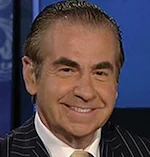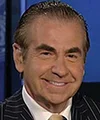 |
| Fraser Seitel |
The bedrock practice of public relations is dealing effectively with the media. Building positive relationships with the press is what public relations pioneers like Ivy Lee and Edward Bernays practiced a century ago. And media relations remains the go-to skill of successful public relations practitioners today.
The most powerful—and difficult—media relations job in the world is the press secretary to the President of the United States. Every day, the White House press secretary must go out and confront a menacing White House press corps, eager to unleash red-meat controversy throughout the land. A press secretary’s every word, therefore, must be measured and purposeful. The job is neither for the squeamish nor the inexperienced.
Over time, a small number of press secretaries—Robert Gibbs under President Obama, Tony Snow and Ari Fleischer under President Bush, Mike McCurry under President Clinton, Sarah Sanders under President Trump and even Jen Psaki under President Biden—were all outstanding. A smaller number—the duplicitous Scot McClellan under Bush, the lugubrious Jay Carney under Obama and the befuddled Sean Spicer under Trump—were dreadful.
Biden’s current press secretary, Karine Jean-Pierre is, by all accounts, a lovely woman. But so far at least, she’s a miserable press secretary. Admittedly, that’s harsh but also true.
What Ms. Jean-Pierre, alas, lacks—and her more able predecessors possessed—were certain characteristics that made them invaluable to both their boss and the media through which they conveyed their Administration’s positions, philosophies and programs.
Indeed, a competent media relations counselor at any level and in any organization must abide by at least three inviolate principles:
It’s not about you
First, you’re speaking as a proxy on behalf of your chief and the administration. Your primary job is accurately to reflect the positions of the enterprise. Who you are and what you think are of little consequence. You’re merely an intermediary, a messenger, a conduit to communicate the thinking of the CEO.
The universally-respected McCurry recognized this when he was asked, point blank, at a Clinton briefing whether he, personally, believed the President had a sexual relationship with White House intern Monica Lewinsky. McCurry’s answer: “The President has said he never had any improper relationship with this woman … I’m here to represent the thinking, the actions, the decisions of the President. That’s what I get paid to do.”
By contrast, George H.W. Bush speechwriter Peggy Noonan was oblivious when she acknowledged that she was the one who created President Bush’s “thousand points of light” voluntarism initiative. Neither the President nor wife Barbara were pleased that Noonan claimed credit for the President’s program.
In Jean-Pierre’s case, her unique background has complicated keeping the story on Biden and not herself. She devoted a large part of her very first White House press briefing in May to noting, “I am a Black, gay, immigrant woman, the first of all three of those to hold this position.”
Her pride was justifiable and well worth mentioning. But she didn’t let it go there. Over the subsequent 10 months on the job, she’s continued to write, lecture and bring attention to her own personal story. No question, hers is an inspirational tale, but her job is to focus attention on the President’s successes, not her own.
Gain a seat at the table
One way to ensure that the focus stays on the chief is by earning a seat at the policy table to participate in the discussions and understand the decisions that become administration policy.
“Access is power” goes the public relations truism, and that’s certainly the case if one is the organization’s lead spokesperson. The closer you are to—and the more comfortable you are with—the individual running the show, the more confidence you’ll display and speak with when representing that individual in public.
Gibbs was the prototypical example. He served as a counselor to Obama for four years before being called upon to become White House Press Secretary. So, it was natural that the incoming President would appoint his longtime friend and advisor as press secretary. When Gibbs opened his mouth as press secretary, he did so with the full knowledge and confidence that he had the boss’ trust.
Psaki, like Gibbs, was a media relations veteran who invested years in ascending public relations roles at the Obama-Biden White House. By the time she was named President-elect Biden’s press secretary in 2020, she, too, had earned a reputation as a knowledgeable, confident and trusted member of the Biden team.
Jean-Pierre, on the other hand, is a relative newcomer not only to the Biden administration but also to the practice of public relations. Her background is as a political operative, having served in various organizational roles in Democrat campaigns. Her public relations “experience" began two years ago as Psaki’s deputy. The point is if Jean-Pierre does have a voice and seat at the Biden management table, it’s likely a faint one at the distant far end.
This unfamiliarity with the boss wouldn’t pose as much of a problem if Jean-Pierre demonstrated an ability to...
Know the policy cold
A capable media relations professional must also know everything about everything of relevance that’s going on both within and outside the organization. He or she must be the eyes and ears of a preoccupied chief, both to provide the leader with instant knowledge and counsel on pressing issues and to put those issues in an understandable context for the public.
This requires doing your own constant due diligence on matters that not only are front-and-center on the national stage but also those lurking behind-the-scenes ready to explode. Too many … “I’ll have to get back to you on that” or … “I have no further information on that” or …“You’ll have to ask others about that” … and your credibility as a reliable source begins to wane.
For the White House press secretary, with a multitude of hot-button topics looming at all times, it’s this responsibility—to be equipped and ready with correct answers —that transcends all others. And it’s here, on a daily basis, that Jean-Pierre’s policy uncertainty and fear of failure expose themselves.
Watch today’s Daily White House Press Briefing and the object that stands out most prominently is the voluminous briefing book, to which Jean-Pierre’s hands appear to be perpetually connected. The press secretary rarely answers a question without first turning—sometimes furiously, other times furtively—to the section in the briefing book coded to the subject in question.
Nothing improper, of course, about making sure your answers reflect written policy. Psaki would occasionally, infrequently turn to the briefing book to ensure accuracy in a particularly prickly area of inquiry. But she, like all good press secretaries, handled most questions with an extemporaneous confidence and clarity. Jean-Pierre, by contrast, is so wedded to the briefing book for virtually every answer, her reliance on it has become a source of criticism and even ridicule by administration critics, who question not only the press secretary’s confidence but her competence.
For example, when Psaki faced recurring hostile questions about the disastrous policy of moving migrants from the southern border, she’d respond specifically, aggressively and extemporaneously, as she did at a January 2022 briefing:
“What I can tell you, in terms of what our policy is and how we’re approaching the border, is that we continue to be under Title 42. Migrants who cannot be expelled under Title 42 are placed into immigration proceedings. And one of those avenues could be placement in an alternative detention program in the interior of the United States … where they wait for next steps in the immigration process, such as a court hearing and are required to check in with a local ICE office. We have stringent protocols and processes that we implement here.”
A year later, when confronted with similar hostility about the Biden administration’s southern border inaction, Jean-Pierre’s answers were characteristically vague, defensive and studiously scripted:
“The President inherited a mess ... Secretary (Alejandro) Mayorkas has worked against immeasurable odds to lead the Department of Homeland Security out of the depths of the prior administration’s chaos, cruelty and dysfunction to deliver real, lasting and meaningful reform.”
In fairness, the job of White House press secretary is a 24/7 pressure cooker, where self-important reporters mainly fling gotcha questions to win themselves air time. Karine Jean-Pierre has been in the saddle for only less than a year. With time may come increased confidence and greater mastery of the subject matter.
But Ms. Jean-Pierre is off to a rocky start. If she’s to reverse disastrous first impressions, she’ll need to master these three media relations principles ASAP.
***
Fraser P. Seitel has been a communications consultant, author and teacher for 40 years. He is author of the Pearson text “The Practice of Public Relations,” now in its 14th edition, and co-author of “Rethinking Reputation" and "Idea Wise.” He may be reached directly at [email protected].


 LSU women’s basketball coach Kim Mulkey’s attacks on a Washington Post profile as a "hit piece," before it was even published, caught the attention of five million people—a far bigger number than the readers of the paywalled article.
LSU women’s basketball coach Kim Mulkey’s attacks on a Washington Post profile as a "hit piece," before it was even published, caught the attention of five million people—a far bigger number than the readers of the paywalled article.  The art of capturing the attention of the right journalist with the right pitch.
The art of capturing the attention of the right journalist with the right pitch.
 National Security Council Coordinator for Strategic Communications John Kirby isn’t the current White House Press Secretary, yet he’s the one the media turns to for answers on the Biden Administration’s policies.
National Security Council Coordinator for Strategic Communications John Kirby isn’t the current White House Press Secretary, yet he’s the one the media turns to for answers on the Biden Administration’s policies. With live press events making a comeback, here a few hints for making yours a success.
With live press events making a comeback, here a few hints for making yours a success.


 Have a comment? Send it to
Have a comment? Send it to 
Feb. 10, 2023, by Bill Huey
"Jean-Pierre, on the other hand, is a relative newcomer not only to the Biden administration but also to the practice of public relations. Her background is as a political operative, having served in various organizational roles in Democrat campaigns. Her public relations ďexperience" began two years ago as Psakiís deputy."
Excellent point, Fraser. Unfortunately, appointing operatives to this critical role has become the norm rather than the exception. Sarah Huckabee Sanders was an operative before becoming press secretary and was one of the biggest liars ever to hold the job. So was Spicer, who had the half-life of a fruit fly.